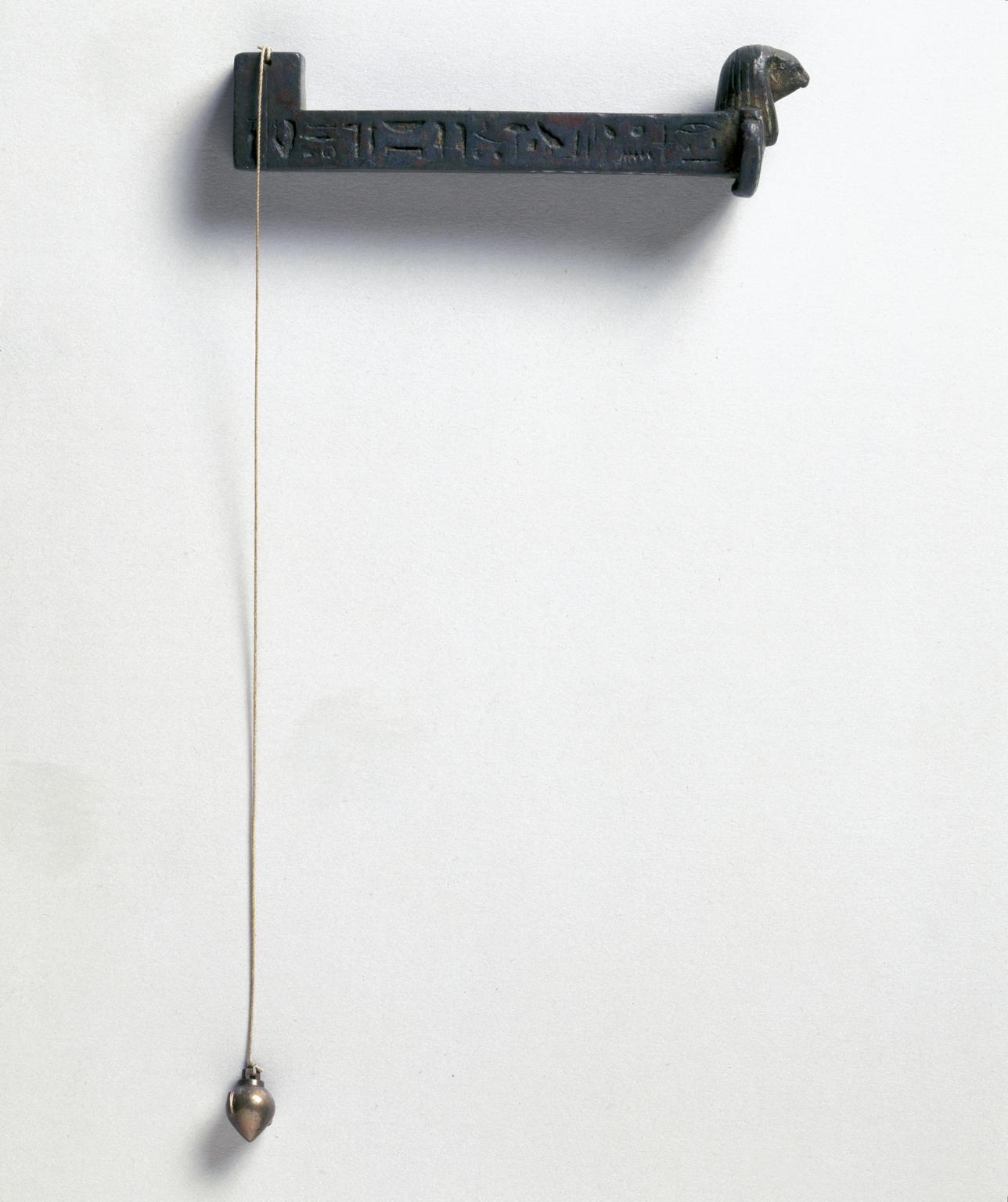Merkhet 3 on:
[Wikipedia]
[Google]
[Amazon]
 The merkhet or merjet (, 'instrument of knowing') was an ancient
The merkhet or merjet (, 'instrument of knowing') was an ancient
 The exact design of the merkhet consists of a horizontal bar, usually carved from wood or bone, with a plumb line hanging from a transverse hole at one raised end of the bar, attached to a controlling wooden handle. As deduced by texts and engravings on the inner walls of the temples of Dendera and Edfu, the merkhet was typically used in conjunction with a corresponding sighting tool, which the Egyptians called a ''bay'', itself made from a specially cut palm-rib with a sliced "V" shape at one end. The two together could also be used, as appropriate, to determine North.
The
The exact design of the merkhet consists of a horizontal bar, usually carved from wood or bone, with a plumb line hanging from a transverse hole at one raised end of the bar, attached to a controlling wooden handle. As deduced by texts and engravings on the inner walls of the temples of Dendera and Edfu, the merkhet was typically used in conjunction with a corresponding sighting tool, which the Egyptians called a ''bay'', itself made from a specially cut palm-rib with a sliced "V" shape at one end. The two together could also be used, as appropriate, to determine North.
The
 The merkhet or merjet (, 'instrument of knowing') was an ancient
The merkhet or merjet (, 'instrument of knowing') was an ancient surveying
Surveying or land surveying is the technique, profession, art, and science of determining the terrestrial two-dimensional or three-dimensional positions of points and the distances and angles between them. A land surveying professional is ca ...
and timekeeping instrument. It involved the use of a bar with a plumb line, attached to a wooden handle. It was used to track the alignment of certain stars called decans or "baktiu" in the Ancient Egyptian. When visible, the stars could be used to measure the time at night. There were 10 stars for the 10 hours of the night; the day had a total of 24 hours including 12 hours for the day, 1 hour for sunset, and 1 hour for sunrise. Merkhets were used to replace sundial
A sundial is a horological device that tells the time of day (referred to as civil time in modern usage) when direct sunlight shines by the apparent position of the Sun in the sky. In the narrowest sense of the word, it consists of a flat ...
s, which were useless during the dark.
Design
meridian
Meridian or a meridian line (from Latin ''meridies'' via Old French ''meridiane'', meaning “midday”) may refer to
Science
* Meridian (astronomy), imaginary circle in a plane perpendicular to the planes of the celestial equator and horizon
* ...
line was crucial to the Egyptians when they observed the movement of celestial bodies across the night sky. As the earth rotates, all the visible objects in the sky all cross this line. The Egyptians determined time by observing the transits of particular stars as they crossed the meridian and came into alignment with two merkhets, one of which was aligned with Polaris
Polaris is a star in the northern circumpolar constellation of Ursa Minor. It is designated α Ursae Minoris ( Latinized to ''Alpha Ursae Minoris'') and is commonly called the North Star or Pole Star. With an apparent magnitude that ...
(and so indicated north). The names of the celestial bodies used to determine time in this way are not known.
Surviving examples
A few merkhets have been preserved, including one in the Science Museum in London. This particular exhibit dates to 600 BC, and, according to a related inscription, belonged to the son of a priest who hailed from a temple dedicated to the Egyptian godHorus
Horus or Heru, Hor, Har in Ancient Egyptian, is one of the most significant ancient Egyptian deities who served many functions, most notably as god of kingship and the sky. He was worshipped from at least the late prehistoric Egypt until the P ...
, located close to Edfu in Upper Egypt.
See also
* History of timekeeping devices *History of timekeeping devices in Egypt
The ancient Egyptians were one of the first cultures to widely divide days into generally agreed-upon equal parts, using early timekeeping devices such as sundials, shadow clocks, and merkhets ( plumb-lines used by early astronomers).
Obelisks we ...
Notes
References
* * * * *{{cite book , last=Whitrow , first=G. J. , year=1989 , title=Time in History: Views of Time from Prehistory to the Present Day , publisher=Oxford University Press , isbn=978-0-19-285211-3 , url=https://archive.org/details/timeinhistory00gjwh/page/n7/mode/2up , url-access=registration Ancient Egyptian culture Timekeeping